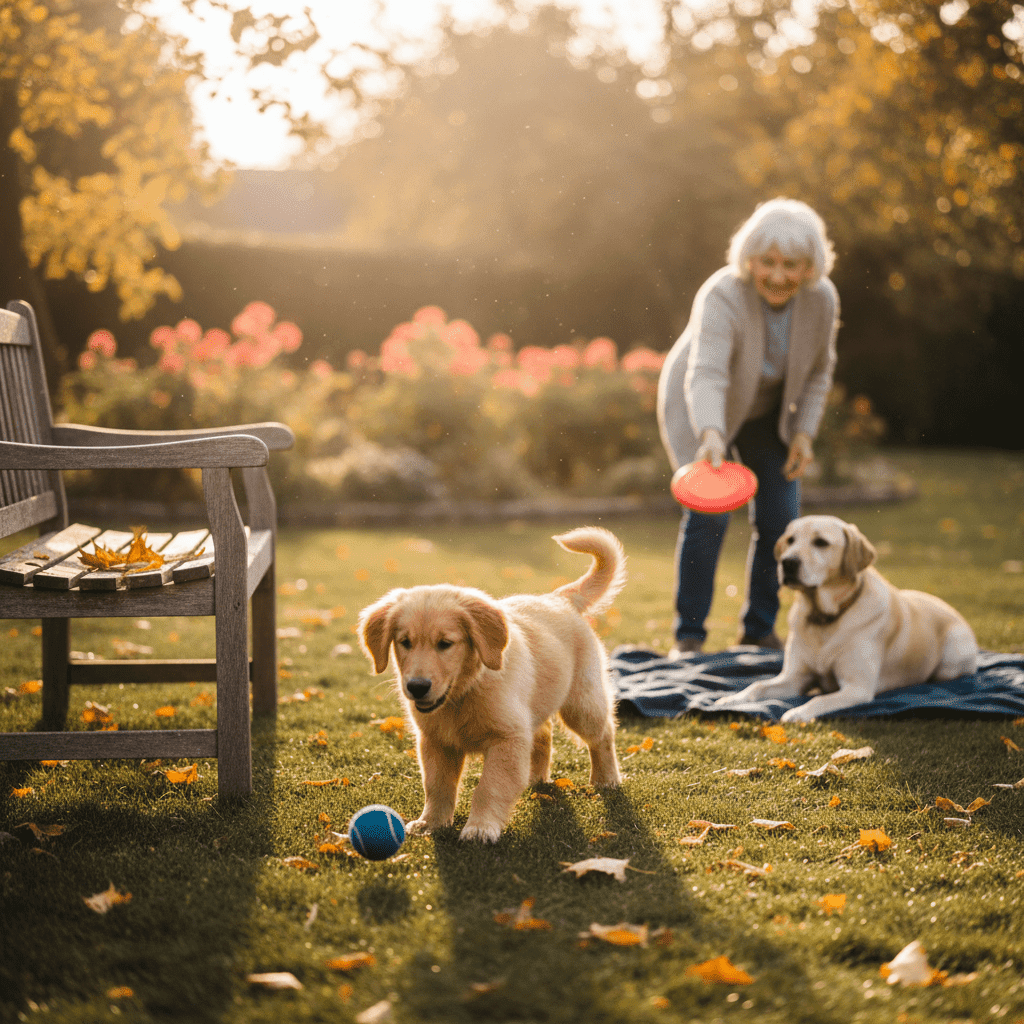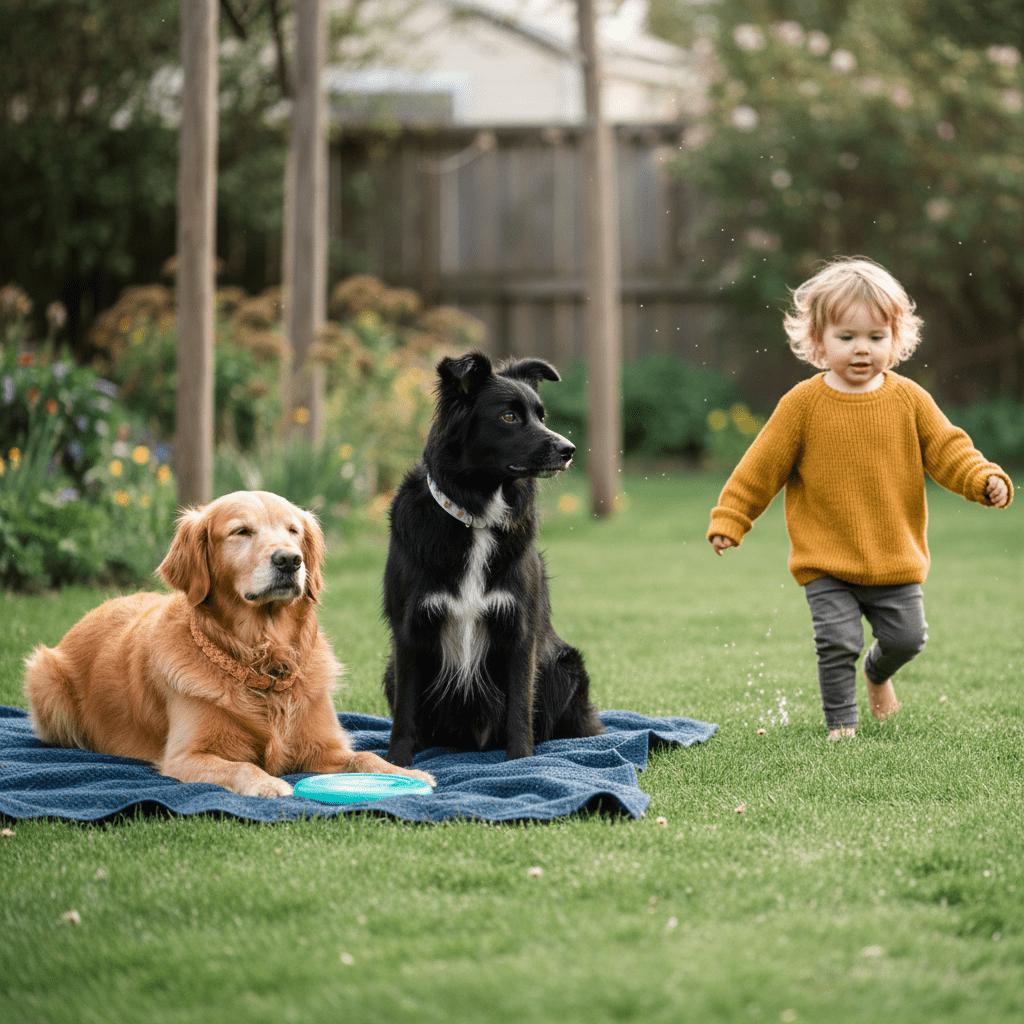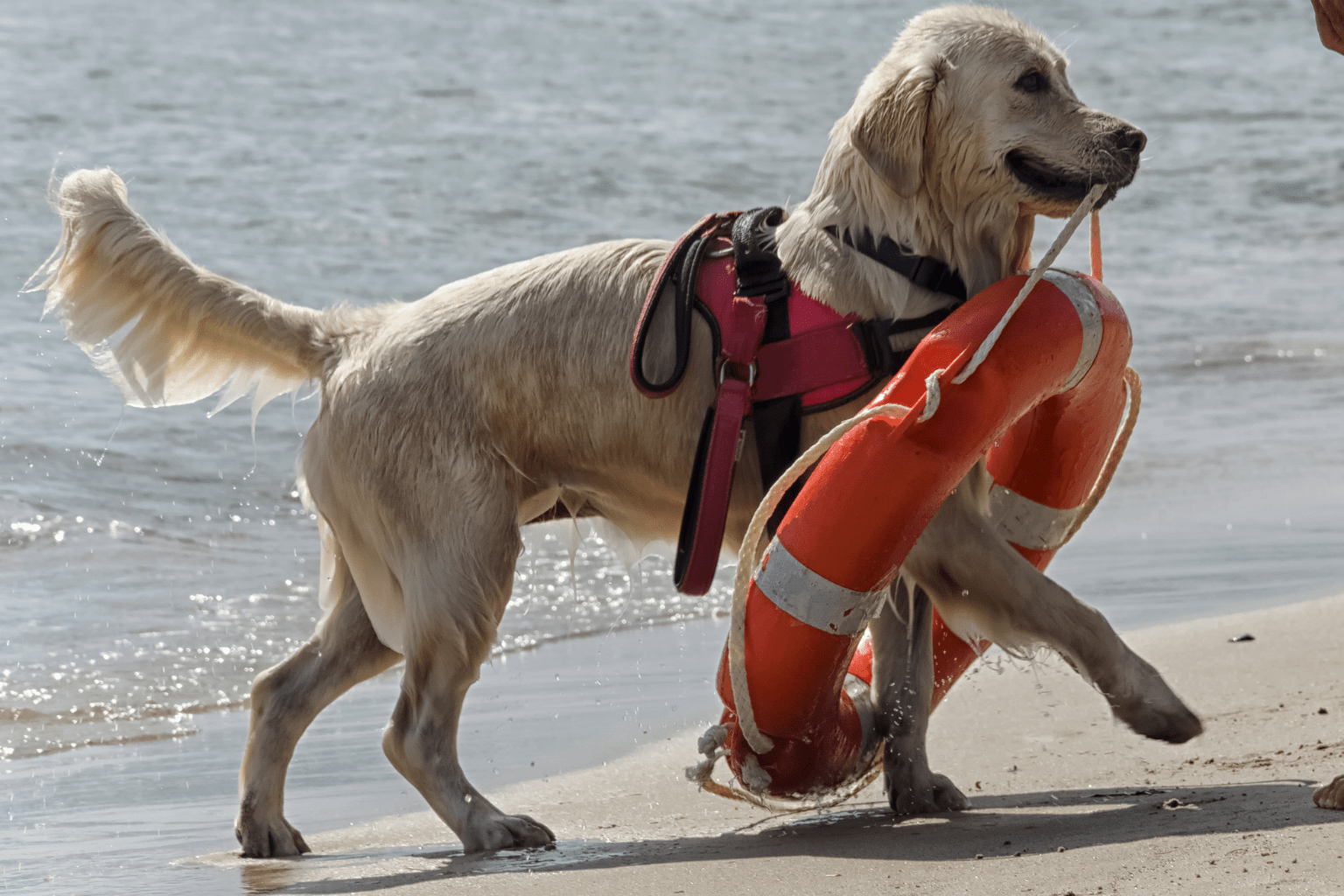Key Takeaways
- Play is essential for dogs of all ages to maintain their physical and mental health.
- Engaging in simple games can bring joy and vitality to senior dogs despite physical limitations.
- Playtime helps sustain the unique spark that keeps dogs feeling alive and happy.
- Observing your dog during play can deepen your understanding of their needs and personality.
Table of Contents
- Why Play Matters at Every Life Stage
- Decoding Dog Play, Signs, Styles, and Adorably Awkward Moves
- How to Encourage and Enrich Play, From Beginners to "I've Tried Everything" Pros
- Solving Common Playtime Problems, Gentle Solutions for Real Scenarios
- Safe Play Dates and Socialization, Beyond the Backyard
- Playtime and Natural Wellness, How Homeopathic Support Helps Dogs Play On
- Your Next Steps, More Hope, More Play, More Life
- Frequently Asked (and Barked!) Questions About Dogs and Play
- Creating Lasting Play Success, Your Path Forward
Dogs and Play, Unlocking Your Best Friend's Fullest, Healthiest Life
Last summer on the Bruce Trail, I watched my Border Collie mix Tango discover pure joy in a simple game of "find the stick." At 12 years old, with creaky joints from years of adventure, she still lit up when playtime began. That moment reminded me why dogs and play aren't just about fun, they're about maintaining the spark that makes our pets truly alive.
For dogs of all ages, supporting their health with over-the-counter natural treatments for life-long support of dogs & cats general health can help them stay active and playful well into their senior years.
Recent behavioral studies show that playtime with dogs for just 15-30 minutes daily can significantly boost mood, reduce anxiety, and maintain cognitive function. But the benefits shift beautifully as our pets age.
Puppies (8 weeks - 1 year): Play teaches bite control, social signals, and builds muscle coordination. Those adorable wrestling matches? They're actually practicing essential life skills.
Adult dogs (1-7 years): Play with dogs becomes an outlet for energy and stress while strengthening your bond. High-energy breeds especially need this mental and physical release to prevent destructive behaviors.
Senior dogs (7+ years): Gentle play maintains mobility and mental spark. Even five minutes of soft tug or a slow-paced game of "find the treats" can keep joints moving and spirits high. Natural joint support like our Walk-Easy® Hip & Joint Pain Relief can help senior pets continue enjoying their favorite activities without discomfort. For more on helping your dog recover and thrive, see these hip and joint surgery after care tips for dogs and cats.
Why Play Matters at Every Life Stage
Play is more than just a way to burn off energy, it's a vital part of your dog's development and lifelong happiness. From the first wobbly pounces of puppyhood to the gentle games that keep seniors moving, play shapes our pets' bodies and minds. It helps puppies learn boundaries, gives adults a healthy outlet for stress, and keeps older dogs mentally sharp and physically comfortable. No matter your dog's age, play is a daily dose of joy and connection that supports their overall well-being.
Decoding Dog Play, Signs, Styles, and Adorably Awkward Moves
Healthy playing with dogs looks like a carefully choreographed dance. Watch for the classic "play bow", front end down, rear up, tail wagging. Dogs take turns being chaser and chased, pause frequently, and maintain soft, open mouths even during mock wrestling.
| Behavior | Healthy Play ✓ | Warning Sign ⚠ |
|---|---|---|
| Body posture | Loose, wiggly, play bow | Stiff, rigid, hard stare |
| Role switching | Taking turns chasing | One dog always dominant |
| Mouth position | Soft, open, gentle | Hard bites, yelping |
| Breaks | Natural pauses, check-ins | Relentless, no stopping |
Every dog has unique play preferences. Border Collies might prefer chase games, while Bulldogs enjoy gentle wrestling. Shy rescues often start with solo toy exploration before joining group play.
How to Encourage and Enrich Play, From Beginners to "I've Tried Everything" Pros

For the shy observer: Start with solo toy play near you. Reward investigation with gentle praise. Schedule 2-3 minute play bursts and celebrate every "try again" moment.
For high-energy chasers: Use long lines for safe physical play in open spaces. Rotate toys every few days to maintain novelty. Try indoor hide-and-seek with treats or family members.
For food-motivated dogs: Transform snack time into play for dogs using snuffle mats, treat-dispensing puzzles, or frozen Kong toys. Mental stimulation can be just as tiring as physical exercise.
Multi-dog families: Ensure everyone gets individual attention. Separate high-value toys to prevent resource guarding. Supervise group play and intervene if one dog consistently dominates.
Solving Common Playtime Problems, Gentle Solutions for Real Scenarios
When play gets too rough: Watch for over-arousal signs like excessive panting, body slamming, or ignoring "pause" cues. Calmly step in, redirect with a toy, and enforce a 2-minute cool-off period.
For toy-refusers: Change the venue, sometimes a new location sparks interest. Try different textures, sizes, or join in yourself. Your enthusiasm can be contagious.
Possessive players: Teach "drop it" and "take turns" through positive reinforcement. Offer high-value treats when they willingly share or release toys. Practice short trading sessions daily to build trust and reduce guarding behaviors.
Anxious players: Some dogs need extra support to feel confident during dogs and play sessions. Natural calming remedies like our Peaceful Paws can help ease transition anxiety, helping nervous pups discover the joy of gentle interaction without overwhelming their system. For more fascinating facts about your canine companion, check out dogs and facts.
Safe Play Dates and Socialization, Beyond the Backyard
Successful playtime with dogs extends beyond solo sessions. Introducing dogs for group play requires patience and strategy. Start with leashed greetings in neutral territory, allowing brief sniff sessions before unleashing. Choose smaller groups initially, three to four dogs maximum, to prevent overwhelming shy or sensitive personalities.
Dog park visits work best during off-peak hours when crowds are manageable. Watch for play bow signals and relaxed body language. If you notice stiff postures, relentless chasing, or high-pitched vocalizations, calmly redirect with distance or distraction. Remember that not every dog needs canine friends to thrive, some prefer human-focused play sessions.
| Dog Type | Best Playdate Setting | Ideal Duration | Special Considerations |
|---|---|---|---|
| Puppies (8-16 weeks) | Controlled home environment | 15-20 minutes | Size-matched playmates only |
| Shy rescues | Quiet backyard with one calm dog | 10-15 minutes | Multiple escape routes available |
| High-energy breeds | Fenced dog parks or large yards | 30-45 minutes | Regular water breaks essential |
| Senior dogs | Familiar territory with gentle companions | 10-20 minutes | Soft surfaces, joint support helpful |
Multi-pet households benefit from structured play for dogs that includes everyone. Rotate one-on-one attention, provide multiple toy stations, and establish quiet zones where individual dogs can decompress. Even cats and dogs can develop playful relationships with gradual, supervised introductions and respect for each species' communication style.
Playtime and Natural Wellness, How Homeopathic Support Helps Dogs Play On

The connection between dogs and play and overall wellness runs deeper than physical exercise. When Tango started favoring her left hip after our weekend trail adventures, I discovered how gentle homeopathic support could maintain her love of chase games without harsh side effects. Natural remedies work with your dog's own healing systems, supporting joint comfort and emotional balance.
Our pellet format makes dosing stress-free for any size dog. Simply place the tiny pellets on your dog's gums where they dissolve quickly, no wrestling with liquids or hiding pills in food. Whether supporting an anxious rescue's first playdate or helping a senior maintain their signature tail-wagging enthusiasm, natural wellness keeps the joy in movement. For more on recognizing health issues that may affect your dog's play, see these signs of kidney and bladder problems in dogs.
Max's Comeback Story: After months of avoiding his favorite tennis ball, 9-year-old Golden Retriever Max rediscovered his playful spirit with consistent homeopathic joint support. His family reports he now initiates games again, proving that age doesn't have to end the fun.
Every BestLife4Pets purchase supports rescue organizations, helping shelter dogs experience their first taste of carefree playtime with dog families. Because every pet deserves to feel the pure happiness that comes from a good game of tug or an enthusiastic round of fetch.
Your Next Steps, More Hope, More Play, More Life
Ready to transform how to play with your dog into daily moments of pure connection? Start with one new game this week, whether it's hide-and-seek in the hallway or a gentle tug session on the living room carpet. Small changes create lasting bonds and healthier, happier pets.
Join our community of pet parents who've discovered that the best medicine often comes in the form of a wagging tail and a playful heart. Share your play success stories, explore our complete line of natural remedies designed to support every stage of your dog's playful life, and remember, every purchase helps rescue pets find their forever families and first joyful games.
Because at the end of the day, dogs and play represent something beautifully simple: the pure, healing power of joy shared between species who chose to love each other.
Frequently Asked (and Barked!) Questions About Dogs and Play
How can I tell if dogs are playing or fighting?
Look for play bows, role reversals, and relaxed body language. Fighting involves stiff postures, continuous aggression without breaks, and intense vocalizations. Healthy dogs and play includes natural pauses and loose, wiggly movements. For a scientific perspective, see how dogs play.
Should I intervene if play seems rough?
Brief rough play is normal, but step in if you notice relentless chasing, yelping, or one dog trying to escape. Call for a "time out" and redirect with distance or toys rather than scolding.
What if my dog doesn't play, is that okay?
Absolutely. Some dogs prefer quiet companionship, gentle walks, or solo activities. Respect your dog's personality while occasionally offering low-pressure play invitations to keep options open.
How much playtime is enough?
Most dogs benefit from 15-30 minutes of active playtime with dogs daily, but this varies by age, breed, and health. Puppies need shorter, frequent sessions while adult working breeds may crave longer activities.
Is it safe for puppies and senior dogs to play together?
With supervision, yes. Ensure size compatibility and watch for the senior dog's comfort signals. Gentle, brief interactions often work best, allowing both dogs to set their own pace.
What should I do if my dog gets anxious during play?
Remove your dog calmly from the situation and provide a quiet space to decompress. Natural calming support like our Pet Relax can help ease social anxiety over time, making future play for dogs more enjoyable.
Creating Lasting Play Success, Your Path Forward

The science is clear: dogs and play create measurable improvements in physical health, emotional resilience, and human-animal bonds. Yet the most profound truth about play isn't found in research studies, it's discovered in those spontaneous moments when your dog's eyes light up with pure joy. For more in-depth research, explore this study on canine play behavior.
Moving forward, focus on consistency over intensity. A daily five-minute game of gentle tug builds stronger foundations than sporadic hour-long sessions. Pay attention to your dog's individual play signature, the specific games, times of day, and interaction styles that spark their unique enthusiasm. Some dogs bloom with morning fetch sessions, while others prefer evening puzzle games or weekend hiking adventures.
The Play-Wellness Connection: Dogs who engage in regular, appropriate play show 40% fewer stress-related behaviors and maintain better joint mobility into their senior years. The investment in daily play pays dividends in reduced veterinary visits and extended quality time together.
Consider how natural wellness support can enhance your dog's play experience without the side effects that often accompany conventional interventions. Whether supporting joint comfort for active breeds, easing social anxiety in rescue dogs, or maintaining cognitive sharpness in seniors, gentle homeopathic remedies work alongside your dog's natural healing systems.
Remember that play evolves with your dog's life stages. The exuberant puppy who loved wrestling matches may become the dignified senior who prefers leisurely sniffing games. Embracing these changes while maintaining playful connections ensures that playtime with dog remains a source of mutual joy throughout your shared journey.
Your next play session starts now, whether it's a quick game of hide-and-seek before dinner or simply tossing a favorite toy across the living room. Because in a world that often feels complicated, the simple act of play reminds us that the best moments happen when we choose joy, connection, and the healing power of shared laughter.
Frequently Asked Questions
How can playtime be adapted to suit the physical and mental needs of senior dogs?
Playtime for senior dogs should focus on gentle, low-impact activities like slow-paced games of "find the treats" or soft tug sessions. These help maintain mobility and mental sharpness without overexerting joints, allowing older pets to enjoy play safely and comfortably.
What are the key signs and behaviors to look for that indicate healthy and safe play between dogs?
Healthy play includes relaxed body language, loose movements, and taking turns during games. Look for signs like play bows, gentle mouthing, and pauses that show both dogs are comfortable and enjoying themselves without stress or aggression.
Why is daily play important for dogs at different life stages, from puppies to seniors?
Daily play supports puppies in learning social skills and coordination, helps adult dogs release energy and reduce stress, and keeps senior dogs mentally engaged and physically active. Each stage benefits from play tailored to their unique needs, boosting overall well-being and happiness.
How can natural supplements support a dog's ability to stay active and playful as they age?
Natural supplements can support joint comfort and overall health, helping senior dogs maintain mobility and enjoy playtime longer. By supporting the body’s own healing, these remedies may ease discomfort and promote vitality, making gentle activity more enjoyable.



